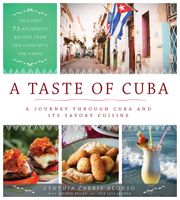Label
All
0
Clear all filters
Save 25% on ckbk Premium Membership with code FALLFLAVORS 🍁
Trinidad
Appears in
Published 2018

Men on horseback ride through Plaza Mayor.
Driving south from Cienfuegos to the town of Trinidad, on Cuba’s southern coast, travelers can go miles with only views of sprawling land; landscapes that look as if they came out of an impressionist painting. The land once served a wealthy sugar industry, but economic reforms have closed most of the factories and mills of the region, leaving just a sprinkling of farmers and their farmhouses.
Trinidad’s famous bell tower decorates the entrance to the restored colonial town, which features terracotta-tiled roofs and Moorish-style courtyards. Located in the central Cuban province of Sancti Spíritus, Trinidad was colonized by the Spanish in 1514, as the island’s third settlement. In 1518 the town was depleted of most of its original inhabitants when the Spaniard Hernán Cortés passed through, recruiting mercenaries for an expedition to Mexico. The remaining local Taíno people maintained an economy of farming and cattle rearing, but due to poor communications, they were cut off from colonial authorities in Havana. Soon after, Trinidad became a haven for pirates and smugglers running an illegal slave trade with the nearby British-controlled island of Jamaica.
Become a Premium Member to access this page
Unlimited, ad-free access to hundreds of the world’s best cookbooks
Over 160,000 recipes with thousands more added every month
Recommended by leading chefs and food writers
Powerful search filters to match your tastes
Create collections and add reviews or private notes to any recipe
Swipe to browse each cookbook from cover-to-cover
Manage your subscription via the My Membership page
Best value
In this section
Advertisement
Advertisement
The licensor does not allow printing of this title


